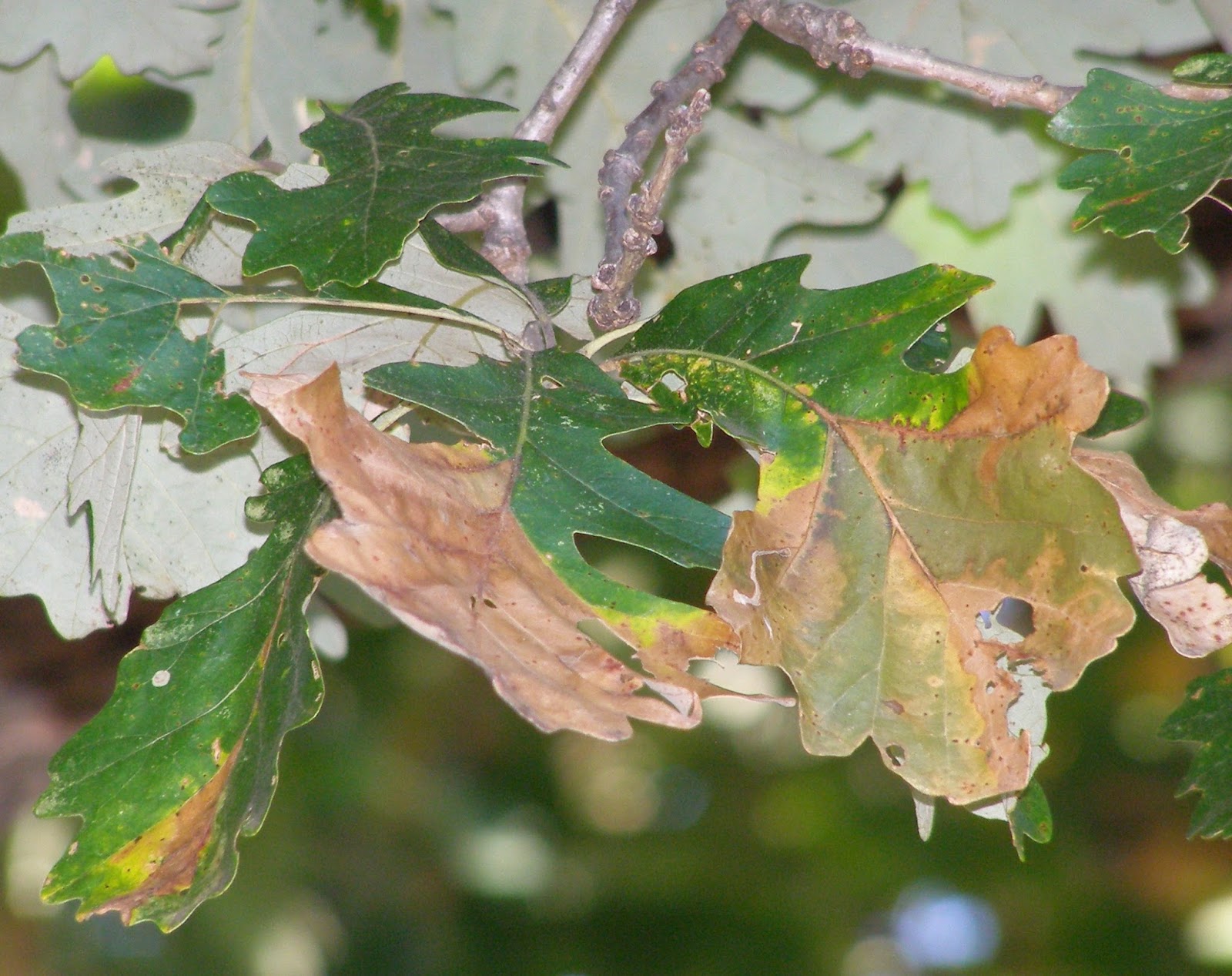
Healthy Oak Leaves
While trees are an overall low-maintenance addition to your landscape, tree disease is an unfortunate and common occurrence. Bur Oak Blight (BOB), discovered by Dr. Tom Harrington of Iowa State University, has recently been reported in Ramsey and Hennepin counties. Cases of BOB have been found in Wayzata, Minnesota, among other cities. It is important to know what BOB is, how to spot it and how to manage it.
What is Bur Oak Blight?
Bur Oak Blight (BOB) is a fungus that affects an Oak’s leaves. It was originally thought to be caused by the fungus Tubakia dryina, but researchers learned it was caused by a different, unnamed species of Tubakia. BOB is common throughout Iowa, central Minnesota, eastern Nebraska and southwestern Wisconsin. In addition to Ramsey and Hennepin counties, BOB has also been spotted in Mille Lacs and Sherburne counties.

Bur Oak Blight
How Do I Spot It?
Oak trees infected with BOB will have large, brown blemishes on the leaves, as well as brown veins. The result is an overall wilted appearance. In less common cases, there may only be small blemishes on the leaves. During the summer black blisters can form along the veins. These can be found with the assistance of a 10x magnifying lens. The symptoms of BOB are most often be spotted on the bottom half of the tree’s crown, though as the fungus goes untreated this can spread through the top half of the tree. One distinguishing trait of BOB is that some of the infected leaves will stay on the branches throughout winter, while the leaves of healthy bur oak trees are all dropped before winter.
How Do I Manage It?
As the severity of the blight increases, the likelihood of the death of the tree increases as well. The decaying health of the tree might also be worsened by secondary illnesses including Armillaria root rot and Two-lined Chestnut borer. While symptoms of BOB appear in late July or August, it should be treated in late May or early June to reduce symptoms for the fall and following year. Unfortunately, removing the fallen, infected leaves is not an effective way to treat BOB, as the fungus can live through the winter. Testing has shown that the most effective solution is fungicide treatments. Ostvig Tree Care offers a range of disease treatments. Our Certified Arborists are available to keep your trees healthy.
Including trees in your yard is an investment. Treating them for illnesses is a simple way to ensure them a long life of strength and beauty. If you suspect your trees have been struck with a disease or infestation, contact us today.







